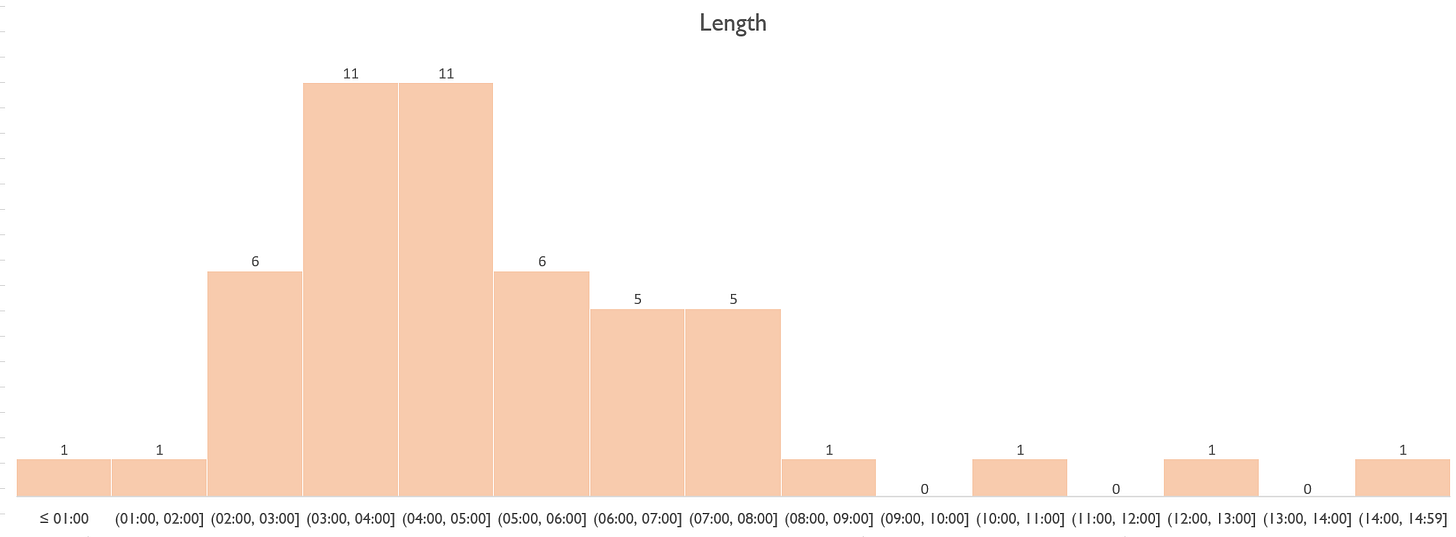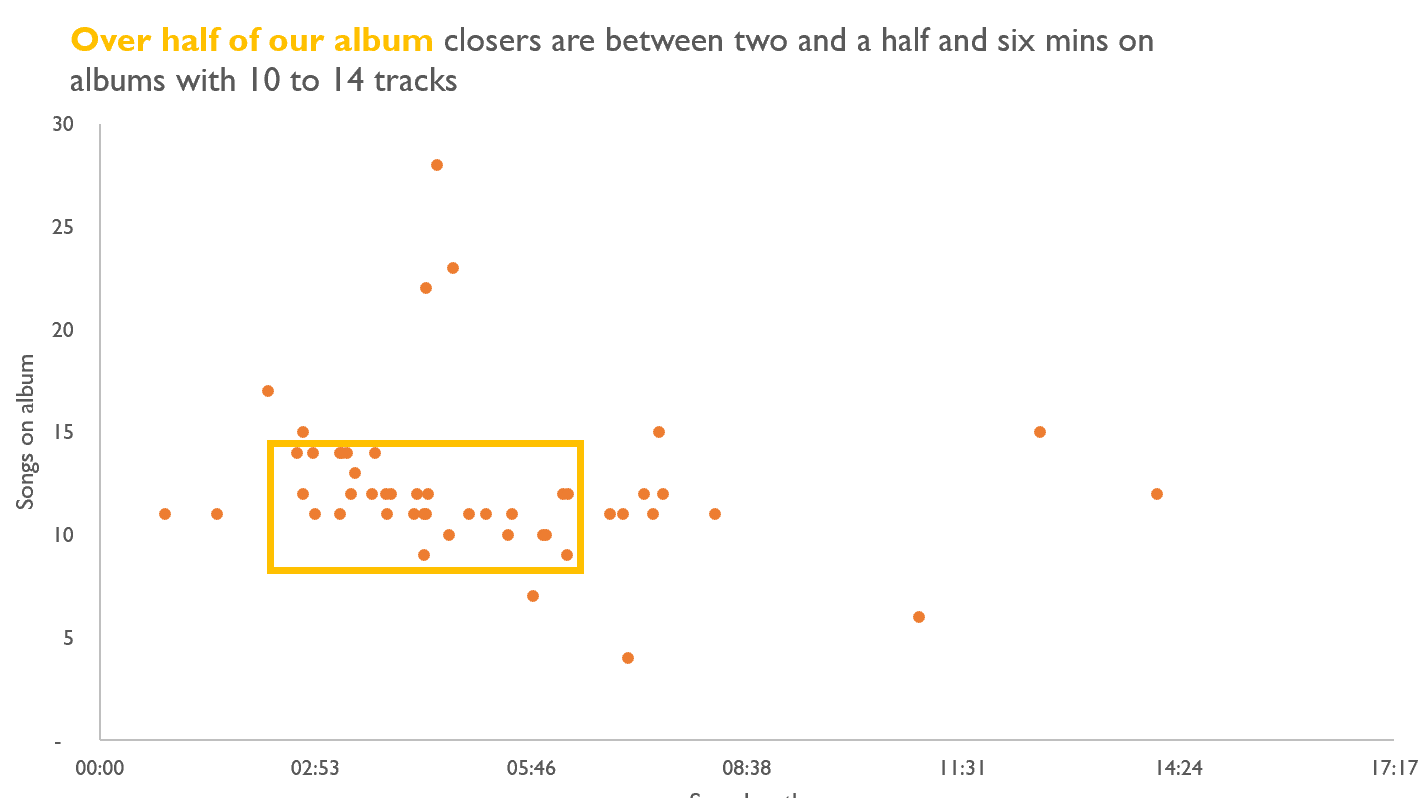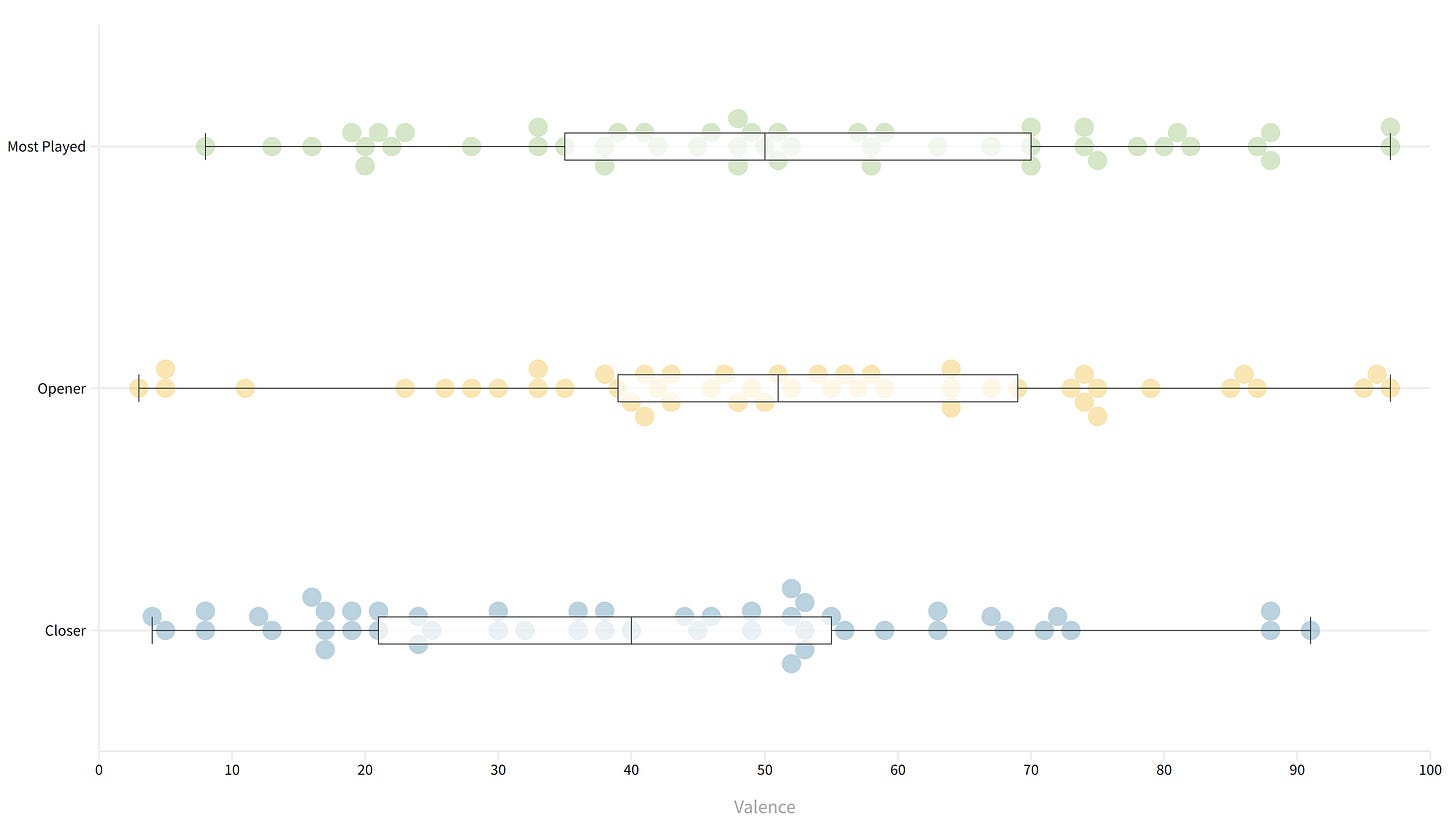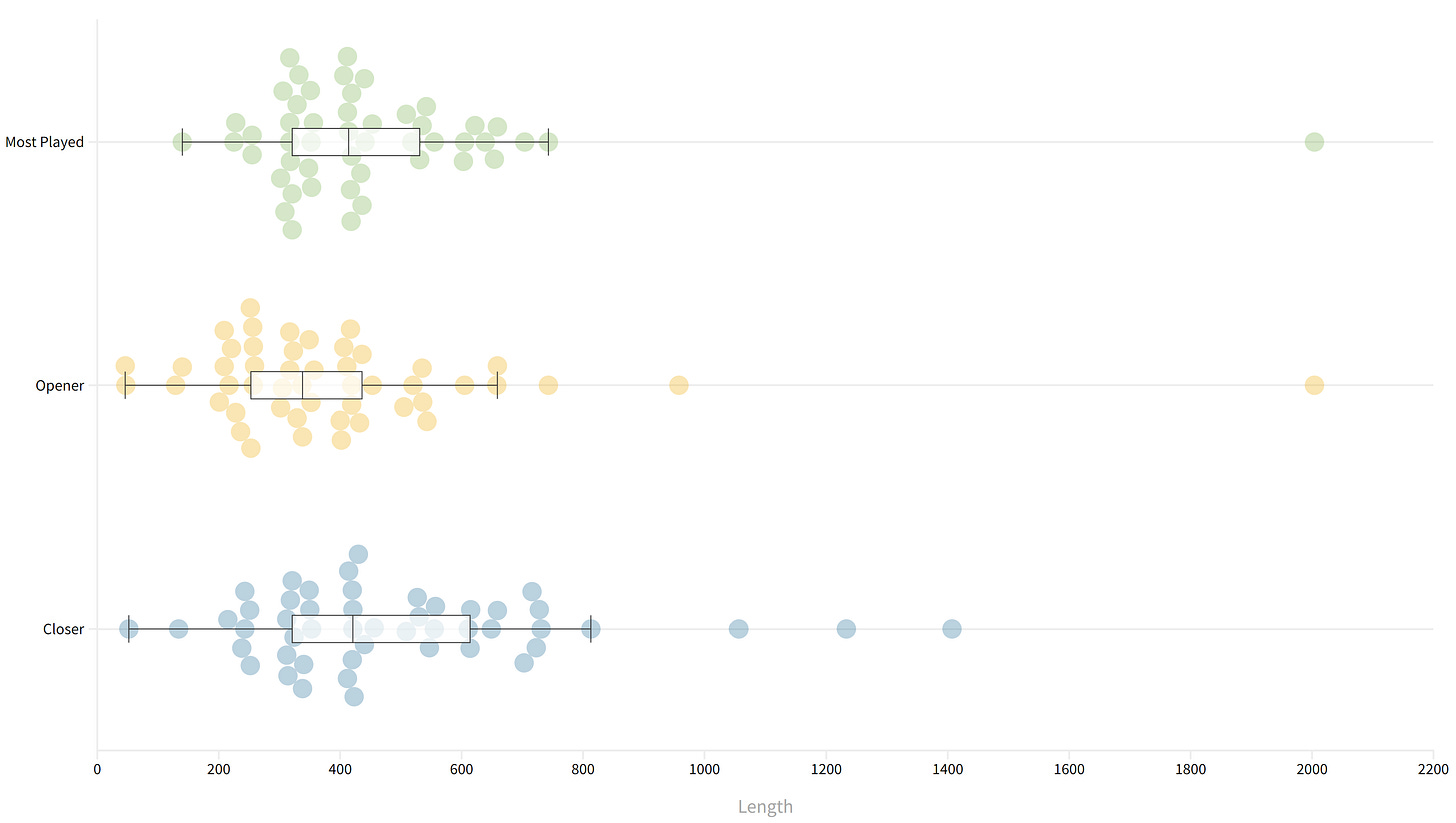More data analysis
Now we are 50.
Firstly, apologies to those that got two emails of the John Coltrane entry - this was a Substack error that impacted many writers last week.
We have now looked at 50 tracks on our journey at The Run Out Grooves; that feels like an excellent opportunity to analyse the tracks and make some comparisons as we did after 30 songs.
So here is the playlist; now over four hours long
De La Soul is still missing, so it doesn’t feature; Neil Young’s After The Gold Rush is not playable, but the metadata still exists. So we are looking at 49 entries at this point. We still know when 3ft High and Rising was released, though, so let’s go with the release dates.
Not much has changed from the last time we looked at this, there is a consolidation of the late sixties1 as the front runner with the most entries, and the two periods 1985-1994 have also seen enough to keep ahead of either half of the 1970s. Limited showings for the early 1980s and 21st Century at this stage - of course, this tells us nothing about album closers at the moment; it is just a function of Acclaimed Music’s most acclaimed albums 100-51.
Let’s look at song length;
Two songs are under two minutes, three over 10 minutes, two of which have multiple parts (The Beastie Boys and Sonic Youth). The mean is now over five minutes, but the median is around 4 min 22. The small number of longer songs is dragging the average up; most of them are under that five-minute mark - even if a significant number are longer. A pattern emerges; these songs are generally longer than the 3 min 30 mark of a song you might hear on the radio or released as a single.
Track numbers coalesce around where you would expect; 80% of the albums are between 8 and 15 tracks long, and over half have 11 or 12 tracks.
We are also starting to see a pattern of slightly longer songs than a standard radio single on albums with around a dozen tracks. How much of this a function of the Acclaimed Music list will be something we look at once we deviate from it.
As we did last time, if we look at the Spotify SAF, we can see some more patterns emerging from previous times.
Happy/Sad
At the end of the albums, songs are sadder than the opening songs and the most popular songs on those albums.
Energy
At the end of these albums, songs have less energy than the most popular tracks and a lot less than the opening tracks.
Acoustic
Closers are more likely to be acoustic.
Length
We have already looked at the length of closers; comparing them to openers, they are longer, and they are slightly longer than the most played tracks.
Conclusion
Based on what we’ve seen so far, the last track on the album is likely to be longer than the opener; it is much more likely to be acoustic, sadder, and have less energy.
More analysis once we hit the 75 mark.
As before, the histogram bins have curly and square brackets; curly means the value is excluded, and square is included. So, [1965-1970] means 1965 to 1970, inclusive, whereas (1970-1975) means 1971-1975.











